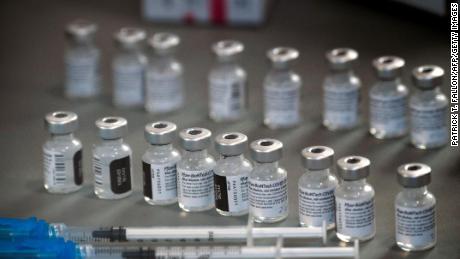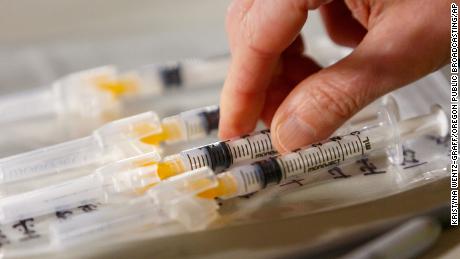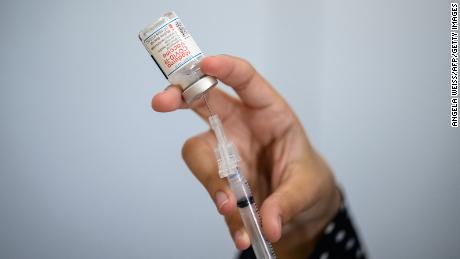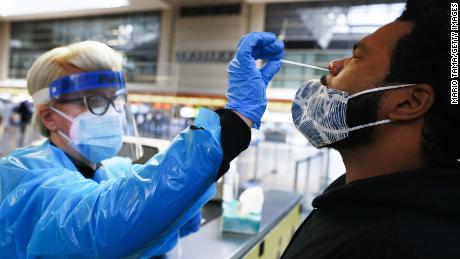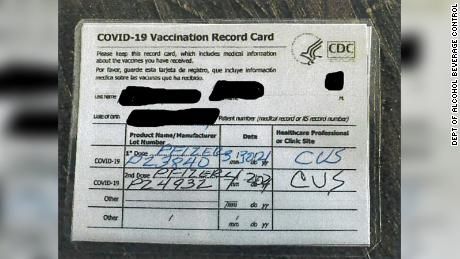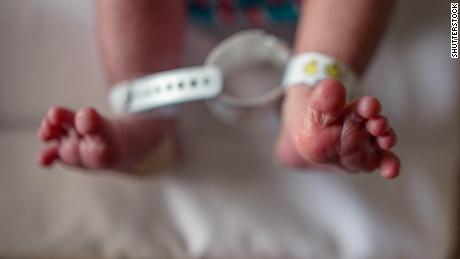These twins were like two peas in a pod — except when Covid-19 struck
It started in the spring of 2020, when the 35-year-old sisters went to the emergency room together after experiencing fever and shortness of breath that hadn’t gotten better after a few days. Kelly, who was working several jobs, thinks she was exposed to the virus by a coworker at a daycare facility; the sisters and their doctors believe that Kimberly, who was already working from home, picked it up from her sister shortly after.
Kelly said she had a bad feeling about the situation. “I have got high blood pressure, I’m diabetic. I have breathing problems — I’m asthmatic — and I think this virus is really going to affect [me] and … I was thinking, ‘It’s going to get worse,’ ” she said in an interview with CNN a few weeks ago.
Kimberly said she felt the “complete opposite” — she wasn’t really worried. “In my mind, I’m thinking, ‘OK, let’s get this out of the way and go home’… like, in a day, not knowing that the process will take as long as it did,” she said.
Like Kelly, Kimberly also has high blood pressure and diabetes, but unlike her sister’s, hers is well controlled, plus she doesn’t have asthma. High blood pressure and diabetes are risk factors for developing severe Covid-19.
The Standard sisters were admitted to Ascension Providence Rochester Hospital in Michigan on the same day, but while Kelly got better with treatment and was discharged after six days, Kimberly got worse.
“I ended up getting sicker. My fever was increasing all the time… It got so bad, I passed out and ended up going to the ICU. So, from there, it’s a complete blank,” she said.
In fact, Kimberly got so sick, she was airlifted by helicopter to a different hospital where she eventually wound up on a type of life support called ECMO. It stands for extracorporeal membrane oxygenation — it’s a machine that pumps and oxygenates a patient’s blood outside the body. She spent about a month connected to tubes and machines, in and out of consciousness, and battling for her life.
This vast difference in how Kelly and Kimberly reacted to the coronavirus surprised the twins and at least one of their doctors.
“I was in complete shock for sure, as to how… two of the most identical people in the world can have such different disease courses,” said Dr. Mishita Goel, part of the team of health care providers who treated and cared for the twins at Ascension.
“They both had similar medical conditions: they both had hypertension and diabetes. It was Kelly who had asthma as well, and she had uncontrolled diabetes, so one would expect her to worsen [not Kimberly],” said Goel, an internal medicine resident affiliated with Wayne State University’s School of Medicine.
Seeing what was happening with her twin sister was “devastating” for Kelly. “I thought I was going to lose her,” she said, still visibly shaken by the events of a more than year ago. “She was on a ventilator, she looked so helpless …”
Kelly said she had to beg the doctors to let her see her sister before the helicopter whisked her to the University of Michigan Medical Center in Ann Arbor, an hour away.
‘It’s complicated’
It’s a question that even vexes Dr. Anthony Fauci, director of the National Institute of Allergy and Infectious Diseases and President Joe BIden’s chief medical adviser.
“I want to find out how could it possibly be that the same virus that’s killed 570,000 people in this country is a virus in which more than half the people don’t ever get any symptoms,” Fauci told CNN Chief Medical Correspondent Dr. Sanjay Gupta during the Fifth International Vatican Conference taped in April.
“I mean, you could say, ‘Well they’re young, they’re healthy,’ but that’s not an adequate explanation. There’s something there, something that we don’t know about, about the pathogenesis,” Fauci added.
The mystery is even more confounding with identical twins — who are the same age, have the same DNA and, in this case, presumably have caught the same variant of the virus and share the same underlying conditions that increase risk. How can they have such different experiences with the same disease?
“We still don’t know a lot about what predisposes an individual person to get severely ill while another person who has very similar characteristics may not,” said Angela Rasmussen, a virologist and an affiliate at the Georgetown Center for Global Health Science and Security.
Rasmussen, who studies how people respond to infections and the factors that might predict disease outcome, said it’s not just genetics or age or comorbidities; it can be a combination of all those things, plus environmental factors like diet and past infections.
“Identical twins may be genetically identical for the most part, but they’re actually still very different individuals,” she said. “They’re also living different lives; they’re separate autonomous individuals.”
So even when the DNA is the same, outside factors can change how genes are expressed — meaning which genes get turned on (or silenced) and thus which proteins get made and how the body behaves.
In other words, as Rasmussen said, “it’s complicated.”
Identical twins not completely identical
The immune systems of identical twins can vary in important ways, too. And how someone’s immune system responds to infection can impact the severity of Covid-19, Rasmussen says.
“The different ways that your body reacts to having a viral infection is probably a really, really large, significant determinant of how sick you’re actually going to get,” Rasmussen explained.
The immune system is incredibly complex, but there are two basic arms: the innate and the adaptive immune responses. The innate response — the first line of defense — tends to be delayed a bit in people who get sicker with Covid-19.
“Your body has basically a fire alarm system that’s a sprinkler system all at the same time… [This] is the first line of defense against different viral infections. When that system is delayed at triggering the alarm, and then consequently triggering the defenses, people tend to have worse outcomes and more severe disease,” said Rasmussen. “We’re still learning about what makes that delay happen. But that does seem to be one of the major driving factors in how sick people will ultimately get.”
The response that comes later, the adaptive one, is another example of how identical twins may not be so purely identical. This is the stage when B-cells generate antibodies and T-cells carry the “memory” of past germy invaders, so they can recognize and attack them when they’re spotted in the body.
What makes the adaptive immune system vary so much person to person is that these cells constantly mix and match some of their genes, “recombining” or shuffling them in order to be prepared to identify an incredible variety of pathogens.
“So when B cells that make antibodies and T cells are developing, they actually go through a process called recombination that results in them having different DNA,” Rasmussen explained.
Rasmussen said that means identical twins aren’t identical in the genetic code of the cells that make up their immune system.
“So, genetically identical twins are actually not genetically identical in terms of the repertoire of antibody-producing B cells and T cells that they have. That could also factor into how they’re going to respond and how effectively they’re going to clear a given infection,” she said.
Together again
Kelly and Kimberly are very curious about what led to their divergent experiences and hope that their experiences can help others understand Covid-19 better.
“It’s a very warming feeling to know that we are part of something that’s going to help people in the future get some understanding of how to control [Covid],” said Kimberly.
Kelly added: “I do want to get an understanding of why the outcome was so different. Just to refrain from going through that, I would like to know.”
The mysteries of the immune system aside, for the twins, the most important thing was getting Kimberly healthy enough to be reunited with her sister.
Kelly said that the first time Kimberly was well enough to speak on the phone, she “cried like a baby” with relief.
“It was just a great moment hearing her. And, day by day, she’s doing better and better and better and better until they gave us the OK to come pick her up… My dad was like, ‘Let’s go get her and bring her home.’ That was like the most exciting part of my life… just to hear that we could come get her,” she recalled.
It took Kimberly a while to regain all the strength and skills lost due to “deconditioning” — a common occurrence among people who’ve spent a long time hospitalized and immobile — but with physical therapy she was able to bounce right back. These days she said, aside from a slight cough and getting winded easily, she feels “wonderful.”
CNN Health’s Michael Nedelman contributed to this report.
![]()




